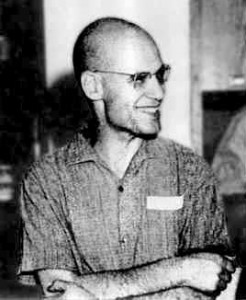Group theorists, often interested principally in the abstract, have been known to neglect the vital importance of producing funky gizmos that exhibit the symmetries they have theorized about. Internet maths celeb Vi Hart, working with mathematician Henry Segerman, has addressed this absence in the case of $Q_8$, the quaternion group. The object they’ve designed is four-dimensional and made of monkeys, and they’ve done the closest thing possible to making one, which is to 3D-print an embedding of it into our three-dimensional universe, also made of monkeys. Their ArXiv preprint (pdf) is well worth a read, and when you get to the photos of the resulting sculpture (entitled “More fun than a hypercube of monkeys”), you’ll fall off your chair.
Further reading
The Quaternion Group as a Symmetry Group by Vi Hart and Henry Segerman, on the ArXiv.
Nothing Is More Fun than a Hypercube of Monkeys at Roots of Unity, including an animated gif of a virtual version of the sculpture rotating through 4D-space.
Henry Segerman’s homepage
Vi Hart’s home page

